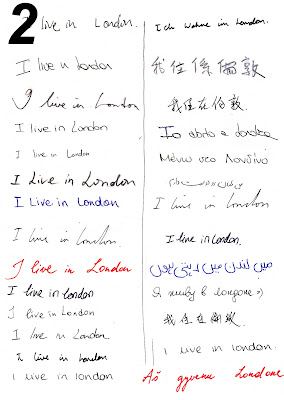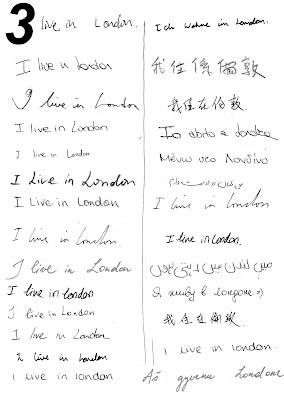(-) what's their favorite hobbies?
(+) writing a piece of text to see the different handwriting
(I) which picture do you have on your desktop?
We chose the second one, but we thought of it as a good idea to compare the English handwriting with the mother tongue's...
when we had all our classmates' handwriting from all our classmate, we started to analyse them..
figure 1 we discovered that only 3/14 were born in London, when the rest wrote in their own language their handwriting became different and new.

figure 2 even after changing the position on the second column, in some cases you can still understand whose handwriting it is due to ink's color

figure 3 but making them all black and white makes it more difficult to understand whose English handwriting matches their mother tongues.

After a research I discovered that emotional energy is determined by how much pressure the writer uses when he writes. If you examine the writing you can determine how much pressure was used by how "dark" the writing is.
Writers with heavy pressure are usually highly successful. They have a lot of vitality and their emotional experiences last for a long time. Writers who write with average pressure are usually moderately successful and usually have enough energy to make it through the day. Those with light pressure try to avoid energy draining situations.
The slant is the second indicator to look for. The slant indicates the writers emotional response to external forces. A right slant (////) signals one who responds strongly to emotional situations. They are caring, warm and outgoing-- their heart rules their mind. A vertical slant (llll) writer tries to keep their emotions in check-- mind rules their heart. A left slant writer (\\\\) will conceal their emotions and is observed as cold and indifferent.
No comments:
Post a Comment